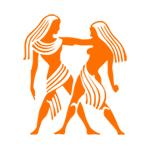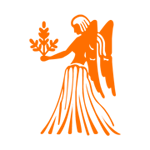 Sawan, also known as Shrawan or Savan, marks a sacred period for Hindus. This period holds great importance according to the Vedas and is considered dear to Lord Shiva and his devotees.
Sawan, also known as Shrawan or Savan, marks a sacred period for Hindus. This period holds great importance according to the Vedas and is considered dear to Lord Shiva and his devotees.
This year, the month of Shrawan holds extra significance as it will last for two months due to the occurrence of Adhik Shrawan Maas. Sawan will span a duration of 59 days, and instead of the usual four, eight Sawan Mondays or Somwars will be observed. The festival commenced on July 4 (Tuesday) and will conclude on August 31 (Thursday). Additionally, the Sawan Somwar fasts will commence on July 10, with the final fast observed on August 28.
During the Sawan Somwar fast, devotees of Lord Shiva abstain from consuming anything except fruits and water. They may also include dry fruits, nuts, sabudana (sago), singhara atta (water chestnut flour), bottle gourd, potato, sweet potato, milk, paneer (cottage cheese), and ghee in their diet. In this blog post, we will tell you how to worship lord shiva during sawan.
How to Worship?
As an offering to Lord Shiva, devotees present Panchamrut, a mixture of milk, yogurt, ghee, Ganga Jal (water from the Ganges), honey, Bilva/Bel leaves, janeyu (sacred thread), Chandan (sandalwood paste), raw rice, flowers, bhang (cannabis), dhatoora (thorn apple), kamal gatta (lotus seeds), prasad (consecrated food offering), paan supari (betel nuts and leaves), cloves, and cardamom, along with dried fruits. However, turmeric, ketki flower, and tulsi leaves are prohibited during the worship of Lord Shiva.
Devotees also wear a rudraksha mala (prayer beads made of Rudraksha seeds) and recite the Shravan Somwar Vrata Katha (the narrative of the Monday fast during Shravan month) every Monday. It is advised for devotees to wake up during the auspicious Brahma muhurta (early morning hours), cleanse their homes to remove impurities, and sprinkle Gangajal around the house on the day of the fast.
Rudra Abhishek and Homa

Rudra Abhishek and Homa are significant rituals associated with Lord Shiva. The term “Rudra” signifies a roaring storm, fire, and fiery red nature, all of which emphasize Shiva’s destructive aspect. This form of Shiva is manifested during His cosmic dance called Tandava, a vigorous dance that symbolizes the cycle of creation, preservation, and dissolution. Tandava represents Shiva’s fierce nature as the destroyer of the universe.
Shiva Abhishek is performed on a Lingam, which represents the manifestation of goodness and the destruction of evil. Different types of abhisheks, where sacred offerings are poured over the Lingam, bestow various benefits to the performer. For instance, milk is believed to grant long life, while honey is known to remove obstacles.
Shiva Abhishek involves the offering of Panchamrit (a mixture of milk, curd, ghee, honey, and Gangajal) along with Dhatura and other holy items that are dear to it. Homa (fire ritual) and Rudra Abhishek bring peace, purify the body and mind, fulfill wishes, and illuminate the soul of the worshipper.
The importance of Sawan month
The significance of the Sawan month is deeply rooted in religious scriptures. It is a time-honored tradition to worship Lord Shiva and his divine family during the sacred month of Shravan. According to religious beliefs, performing the worship of Lord Shiva during Sawan holds immense value, and therefore, devotees engage in the ritual of Rudrabhishek (a special offering to Lord Shiva) during this period. Sawan is widely regarded as the most auspicious month for the worship of Lord Shiva.
During the auspicious month of Shravan, each day of the week holds its own significance:
Monday: It is a day dedicated to the worship of Lord Shiva, also known as Shivji.
Tuesday: Women worship Gauri, the wife of Lord Shiva, for the well-being and prosperity of their families.
Wednesday: This day is devoted to Vithala, an embodiment of Lord Krishna or Lord Vishnu.
Thursday: Guru (spiritual teacher) and Buddha (Lord Buddha) are worshipped on Thursdays.
Friday: Devotees worship Tulsi (holy basil) and seek the blessings of Goddess Lakshmi, the goddess of wealth and prosperity.
Saturday: Saturdays are dedicated to Shani Dev or Saturn. These days are also referred to as Sampat Sanivara or Shravan Saturdays, as they provide an opportunity to pray for the acquisition of wealth.
Sunday: Sundays are devoted to Surya Devata, the Sun god.
It is believed that by worshiping Lord Shiva in this month, devotees can quickly attain his divine grace and have their wishes fulfilled. He bestows blessings upon them, granting them wealth, honor, and status. Additionally, observing fasts on Mondays during this month yields immediate positive results. It is also believed that worshiping Lord Shankar in the month of Sawan can alleviate various issues, including obstacles in marriage. Furthermore, individuals afflicted by the malefic effects of Saturn (Shani) find relief from their Saturn-related afflictions during this time.
Sawan Somwar Mantra
Mantra chanting holds immense significance, particularly the recitation of the Shiva Stotra. It provides a sense of calmness and empowerment to the practitioner. By chanting this Stotra, one can experience the benefits of wealth, prosperity, and happiness. It aids in dispelling negative thoughts and invokes the blessings of Lord Shiva.
To maintain a disciplined practice, chanting is often performed at specific times and with a designated number of counts. Traditionally, each mantra is chanted 108 times. To keep track of the repetitions, a rosary garland or mala can be used, counting one bead for each chant. The chanting can be conducted in the morning or evening, or even throughout the day, depending on personal preference and availability.
During the Sawan Somwar puja, devotees of Lord Shiva recite the sacred mantras of “Om Namah Shivay” and the “Mahamrityunjaya Mantra.” These mantras hold great significance and are chanted with utmost devotion. Additionally, people perform the Shiv Aarti, a ritual of offering light and prayers to Lord Shiva, both in temples and within the sanctity of their homes on this auspicious day.
Sawan Somwar Shubh Muhurat
As per Drik Panchang, the Sawan Shivaratri, which occurs monthly, is observed on the Chaturdashi (14th day) of the Krishna Paksha (waning phase of the moon) – specifically on July 15. The Shivaratri will commence at 8:32 pm on July 15 and conclude at 10:08 pm on July 16. The Nishita Kaal Puja Timings, considered highly auspicious, will begin at 12:07 am and conclude at 12:48 am on July 16.


















